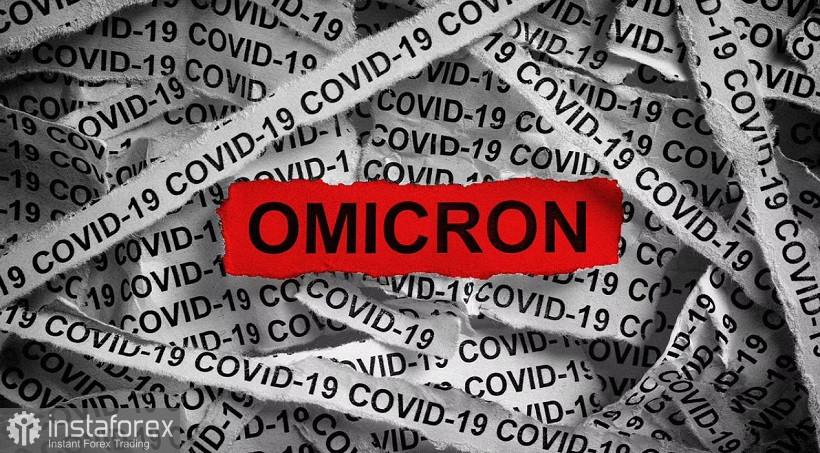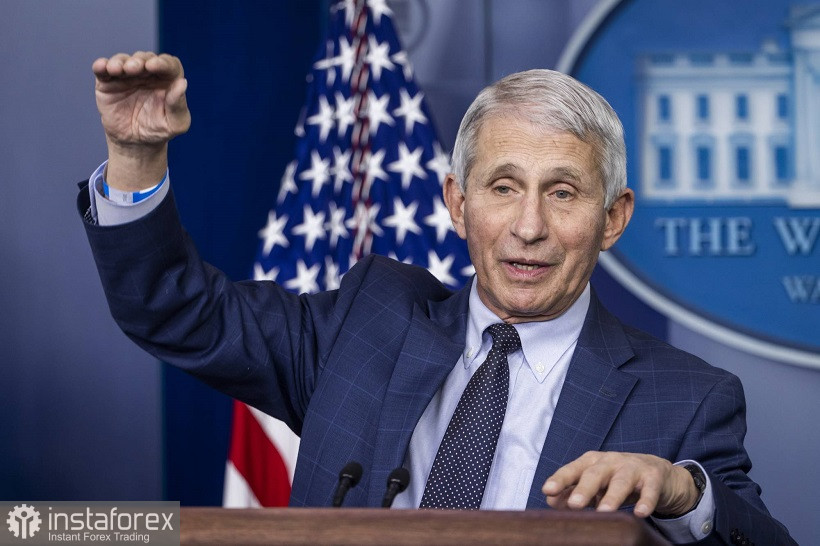The US dollar is gaining momentum again. In almost all major dollar pairs of the "major group" (with the exception of AUD/USD and USD/CAD), the greenback showed character and turned the situation in its favor. The EUR/USD pair was no exception here: the bears were able not only to gain a foothold within the 12th figure, but also updated the local price low, reaching 1.1227. The last time the pair was in this price area was on November 26. There is no consensus among experts as to why the US currency has again become in high demand. But in my opinion, it's all about Omicron, whose negative influence is gradually weakening.
Of course, it is too early to draw any final conclusions: the World Health Organization is still studying this new strain of the virus that has made so much noise in the world. But if we bring together all the most popular versions of virologists, expert opinions and statistical medical data, we can draw cautious conclusions that the new "modification" of Covid is no heavier than the infamous Delta. Moreover, there is a very encouraging theory among experts that Omicron will be able to defeat the pandemic by reducing the number of deaths and the number of hospitalizations as much as possible. And although many assumptions of virologists are still hypothetical, the foreign exchange market began to gradually recover, switching to "classical" fundamental factors.

On the foreground is again talk about the prospects of the Federal Reserve's monetary policy in the context of the latest hawkish statements by Fed Chairman Jerome Powell and many other representatives of the US central bank. In other words, the dollar has found itself in a "warm bath" again: almost all fundamental factors play into the hands of dollar bulls. Even contradictory Nonfarm was interpreted in favor of the greenback, although the number of employed in November increased by only 210,000 with a forecast of growth of 530,000. Some other components (indicators of the increase in the number of people employed both in the private sector of the economy and in the manufacturing sector) also fell short of the forecast values. But traders focused their attention on the positive aspects of the release. For example, the unemployment rate in the United States fell to 4.2%, and the share of the economically active population increased to 61.8%. And the salaries came out "at the level" - it cannot be said that they were disappointed. In particular, on an annualized basis, the average hourly wage increased by 4.8% - as in the previous month.
Contradictory Nonfarm do not always tip the scales in the direction of the dollar – on the contrary, as a rule, the "red color" of the release scares investors away. But not this time. October data in the US labor market strengthened the dollar's position, and even before Powell's resonant speech in the Senate. Traders seemed to expect a tightening of the rhetoric of the head of the Fed – and their expectations were fully justified. Powell was not only concerned about rising inflation, but also announced an early curtailment of QE. At the same time, many of his colleagues (Bullard, Bostic, Mester, Daly, Clarida) said that next year the central bank could start tightening monetary policy by raising the interest rate once or even twice.
The head of the Fed spoke in the US Senate last week, but dollar bulls could not fully "win back" this fundamental factor. The notorious Omicron has confused all the cards. Some experts have suggested that the members of the Fed will take a wait-and-see attitude in December if the situation around the new strain does not clear up by then. This circumstance prevented the EUR/USD bears – they could not settle below the 1.1300 mark to continue their downward path.
And now, apparently, the Omicron factor is gradually fading into the background. An important role in this was played by the chief infectious disease specialist of the USA Anthony Fauci, who has been leading the National Institute of Allergic and Infectious Diseases for the past 37 years. In his opinion, the new version of the coronavirus "does not look very dangerous yet," although some caution still needs to be exercised. As if echoing Fauci, the WHO drew attention to the absence of deaths among those infected with this mutation. Moreover, some virologists have called Omicron a kind of "coronavirus vaccine". In their opinion, the pathogenicity of this strain is reduced, and after recovery, a person becomes immune to even more pathogenic variants of Covid. A high level of contagiousness against the background of its relative "inoffensiveness" will allow Omicron to displace dangerous modifications of the virus – primarily Delta. If these assumptions are confirmed, then the new strain, in fact, will contribute to the formation of collective immunity. In addition, because of Omicron, most likely, there will be no lockdowns (maximum – restrictions for the unvaccinated) – which is especially important in the context of the global economic recovery.

This informational background allows traders to focus on the "classic" fundamental factors. In the context of the EUR/USD pair, this is primarily the divergence of the positions of the Fed and the European Central Bank, especially after the statements of Powell and some of his colleagues. The European currency was not impressed by the rise in inflation in the euro area, nor by the growth of the European economy. ECB representatives for the most part still take a dovish position, excluding the option of early completion of PEPP (while strengthening the APP program is still under discussion). As for the fate of the interest rate, here the ECB also "keeps the defensive", assuring market participants that it will not start discussing this issue no earlier than 2023.
Thus, any corrective growth in the EUR/USD pair can still be used to open short positions. The first target is the psychologically important level of 1.1200, overcoming which will open the way to renewing a new annual low. The next support level is located at 1.1150, which is the lower line of the Bollinger Bands indicator on the D1 timeframe.
 English
English 
 Русский
Русский Bahasa Indonesia
Bahasa Indonesia Bahasa Malay
Bahasa Malay ไทย
ไทย Español
Español Deutsch
Deutsch Български
Български Français
Français Tiếng Việt
Tiếng Việt 中文
中文 বাংলা
বাংলা हिन्दी
हिन्दी Čeština
Čeština Українська
Українська Română
Română

